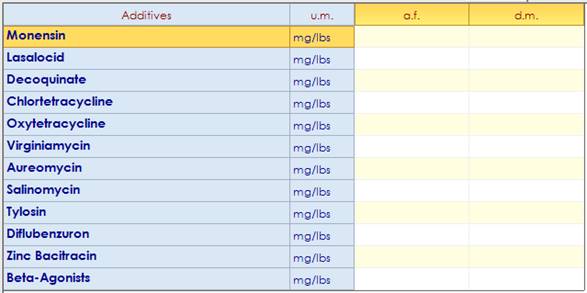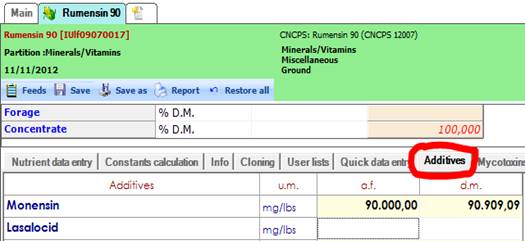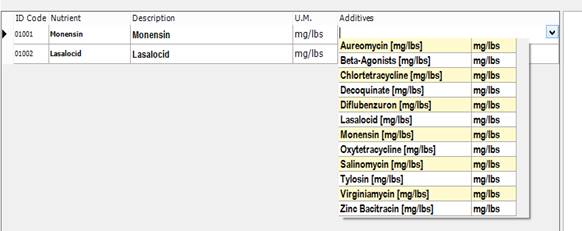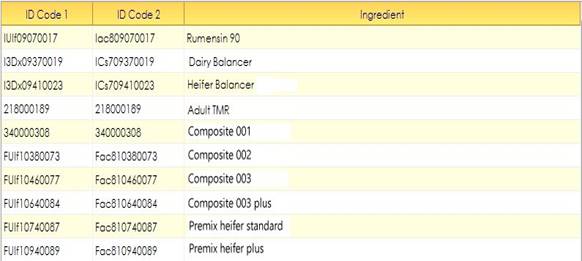
Since version 3.8.10.01 of NDS Professional, a new set of parameters for the Additives management has been provided by default. These are:

The editing and
update of these new values is through a new tab included in the Feeds
section.

Before this implementation, the user had the ability to manage this category of nutrient as User nutrient so, if additives values were previously saved as user defined nutrients, it is recommended to transfer the values assigned to them in the new set of nutrients, linking the user nutrient with the appropriate additive provided as new default additive.
You can do that using a feature available in the User nutrients management panel.
By opening the panel from the Utility tab, a new tab labeled Additives is noticeable:

Clicking on the tab, will be opened a grid allowing the link of the user nutrients to the corresponding additives:

For each user
nutrient, it is possible to select, through a drop down menu, the related
additive in the Additives column:

Through this way,
all the user nutrients defined by the user as additives, are linked to the same
additive from the default list.
After each selection, the related cell in the Additives column is set to the name of the selected additive, which must match with that previously managed as user nutrient.

After this step, it is possible to run the synchronization procedure, clicking on the Synchronize button at the bottom of the form:

The procedure
performs the following tasks:
− Updates the analytical values of feeds that include certain amount for the user nutrient defined as additive, copying the values stored in this user nutrients in the related default additive for each feed.
− Recalculates and updates the analysis of the composites in order to get the proper amount of the additive supplied by the composite that include a source of that additive.
Since this task can take some time, depending on the number of feeds and composites involved, a progress bar is provided at the bottom of the form, to show the state of completion of the task, with numbers that indicate how many items have been recalculated on their total number.
After this step, one can check if the values have been correctly updated; one way to do this is to open the feeds that have values stored in the user nutrient and check if the matching additive have now the same amount. A list of the processed feeds and composites is displayed in the right side of the screen after the completion of the synchronization, showing the user ID codes and the names of the feeds involved in the process.

Although the
synchronization feature has been
conceived as a way to initialize once for all the new set of
Additives, it is possible to
run it again in case of necessity. For
example, if some feeds have been unintentionally overwritten during an import by
feeds that do not have the new additive values set, but have the values stored
in the user nutrients; these last will be copied again in the new set of
standard nutrients and the composites analysis values recalculated.
An important note to consider is that in the case of groups of users that routinely exchange data, each member should run the synchronization feature before doing any further data exchange, to avoid additive values loss during import.
The procedure described above is not necessary for those who have not previously managed additives as user nutrients.
As a related implementation, the additive Monensin was added to the list of items you can manage in the Well-being tool in order to provide an alert to formulated Monensin levels that are out of compliance with approved levels. This would help the nutritionist avoid the problem of accidentally over or under formulating for Monensin sources.

When the
synchronization process is completed, the recipes are automatically updated for
the additives, therefore also for Monensin.
The results is that this value is also visible in the Well-being risks tab both
as grams per Ton of ration Dry Matter and mg per cow per day, and the first one,
since it is compared to the FDA regulatory limits,
is under the same alert system provided for the other items included in
the well-being default list.
You can also graphically display if the current level is within the FDA approved level for TMR that is 11 to 22 grams per Ton of TMR DM.
